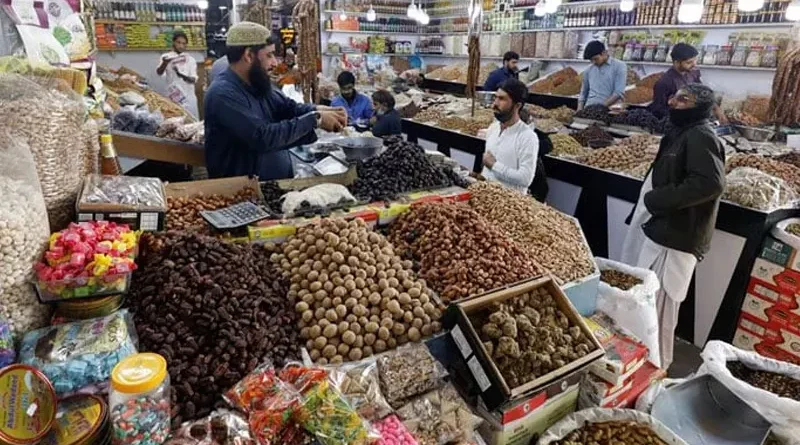Rate cut hopes fizzle out as inflation hits 29.2% in November
ISLAMABAD: Pakistan’s inflation rate accelerated to 29.2% in November 2023, up from 26.9% the previous month, dashing market expectations for a rate cut in the upcoming policy decision meeting this month as the State Bank of Pakistan (SBP) is likely to keep the discount rate unchanged.
The inflationary surge was attributed to a significant increase in gas tariffs in November, a condition imposed by the International Monetary Fund (IMF) for the country to qualify for the bailout programme.
The elevated gas tariffs led to a sharp uptick in housing and utility costs, soaring to 33% from October’s 20.5%. Housing and utilities carry nearly one-fourth of weightage in the Consumer Price Index (CPI), contributing to the overall rise in headline inflation.
In October, CPI inflation had decelerated to 26.9% from a four-month high of 31.4% in September.
The average inflation for the first five months of FY2023-24 reached 28.6%, surpassing the government’s target of 21% and SBP’s range of 20 to 22% for the ongoing fiscal year.
Food inflation in November also increased to 28%, up from the previous month’s food inflation of 26.8%, which was a 16-month low. In September, it stood at 33.1%.
Notable declines were observed in inflation for alcoholic beverages and tobacco, reducing to 82.8% from 84.6% in October. The category of recreation and culture also decreased to 53.56%, lower than the 56.34% recorded in October.
Hotel and restaurant charges in November increased by 31.5%, slightly lower than the 33.1% in October. Transport expenses also decreased to 26.5% from 31.3% in the previous month. Furnishings experienced a decline to 34.5%, down from 37.1% in the previous month. Health expenses also saw a slight decrease to 24.87% from 25.2%.
Meanwhile, in November, price growth showed slight increases in communication, rising to 7.41% from 7.37%. Similarly, for clothing and footwear, the rate increased to 20.9% from 20.6%, and education expenses saw an uptick to 13.6% from 12.8% in the previous month.
Notably, in May 2023, inflation was at its record peak of 38%. Since November 2021, inflation remained persistently elevated and in double-digit territory.
Over October, the inflation increased by 2.7%, the highest in four months, following a 1.1% gain in the previous month.
Notably, the core inflation, which excludes food and energy components, year-on-year arrived at 18.6% against 18.5% in October and 14.6% in November 2022. Over the previous month, it increased 0.9%.
The wholesale price index (WPI), a measure of producer prices, rose to 26.4% in November from 24.6% in October. The sensitive price indicator (SPI), which tracks the prices of essential items on a weekly basis, was recorded at 30.6% against 34.2% in October.
The PBS data further revealed that urban inflation was at 30.4% and rural at 27.5%. In the previous month, urban inflation was at 25.5% and rural at 28.7%.
On a month-on-month basis, tomato prices increased by 60.4%, potatoes 15%, tea 13%, onions 12.3%, dry fruits 7.9%, fish 7.8%, eggs 7.2%, fresh vegetables 4.5%, beverages 0.83%, honey 0.7%, readymade food 0.53% over the previous month.
However, gur price got reduced by 10.44%, sugar 8.5%, condiments and spices 7.9%, gram whole 4.3%, pulse gram 4.1%, pulse masoor 3.9%, cooking oil 3.7%, besan 3.4%, mustard oil 3.3%, pulse mash 2.9%, chicken 2.6%, vegetable ghee 2.4%, rice 1.5%, pulse moong 1.3% and wheat flour price was down by 1%.
Among non-food items, gas charges increased by 280.55%, woolen readymade garments 8.2%, dental services 5.2%, transport services 5.1%, solid fuel 3.5%, woolen cloth 3.3%, doctor (MBBS) clinic fee 2.3%, hospital services 1.6%, education 1.3% and furniture and furnishing charges up 0.8% over the previous month.
Interestingly, the PBS data said that the electricity charges were reduced by 10.7%, motor fuel by 5.8%, liquefied hydrocarbons by 3.1%, motor vehicle accessories by 0.86%, motor vehicles by 0.75% and stationery by 0.2%.
On a year-on-year basis, condiments and spices prices increased 67.6%, wheat flour 63.5%, rice 68%, beans 55%, tea 52%, gur 50%, sugar 50%, beverages 46%, potatoes 42%, mash pulse 42%, wheat products 41%, and the wheat price went up by 38% over the same month of last year.
However, onion prices were reduced by 31%, mustard oil by 3.6%, tomatoes by 3.5%, and pulse gram by 2%.
Likewise, among the non-food items, on a yearly basis, gas charges were up by 520%, textbooks 95%, stationery 46%, washing soap/detergents/matchbox 44%, communication apparatus 40%, household equipment 36%, electricity charges 35%, drugs and medicines 35% and marriage hall charges increased by 34% over last year.

